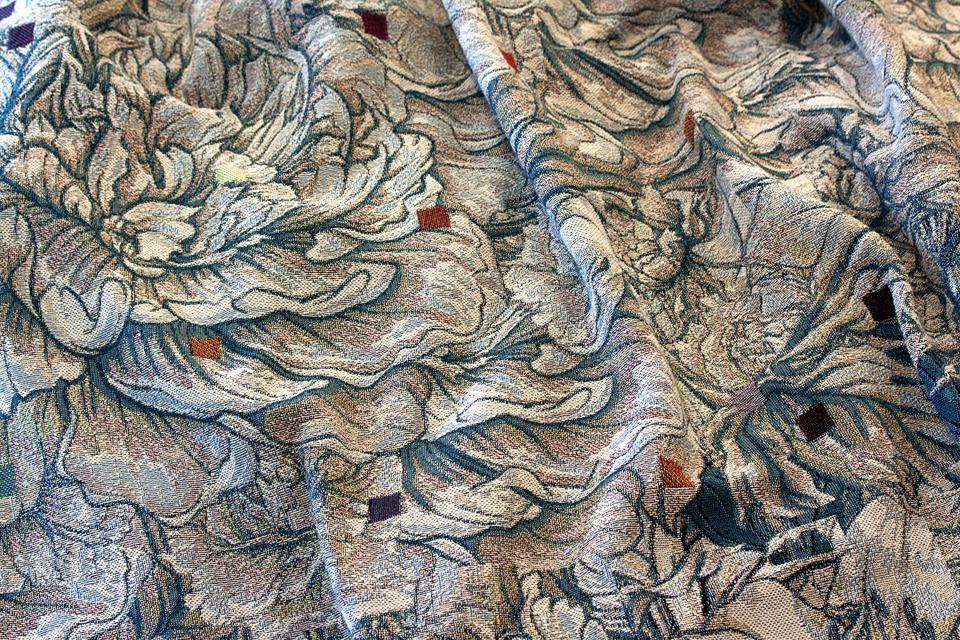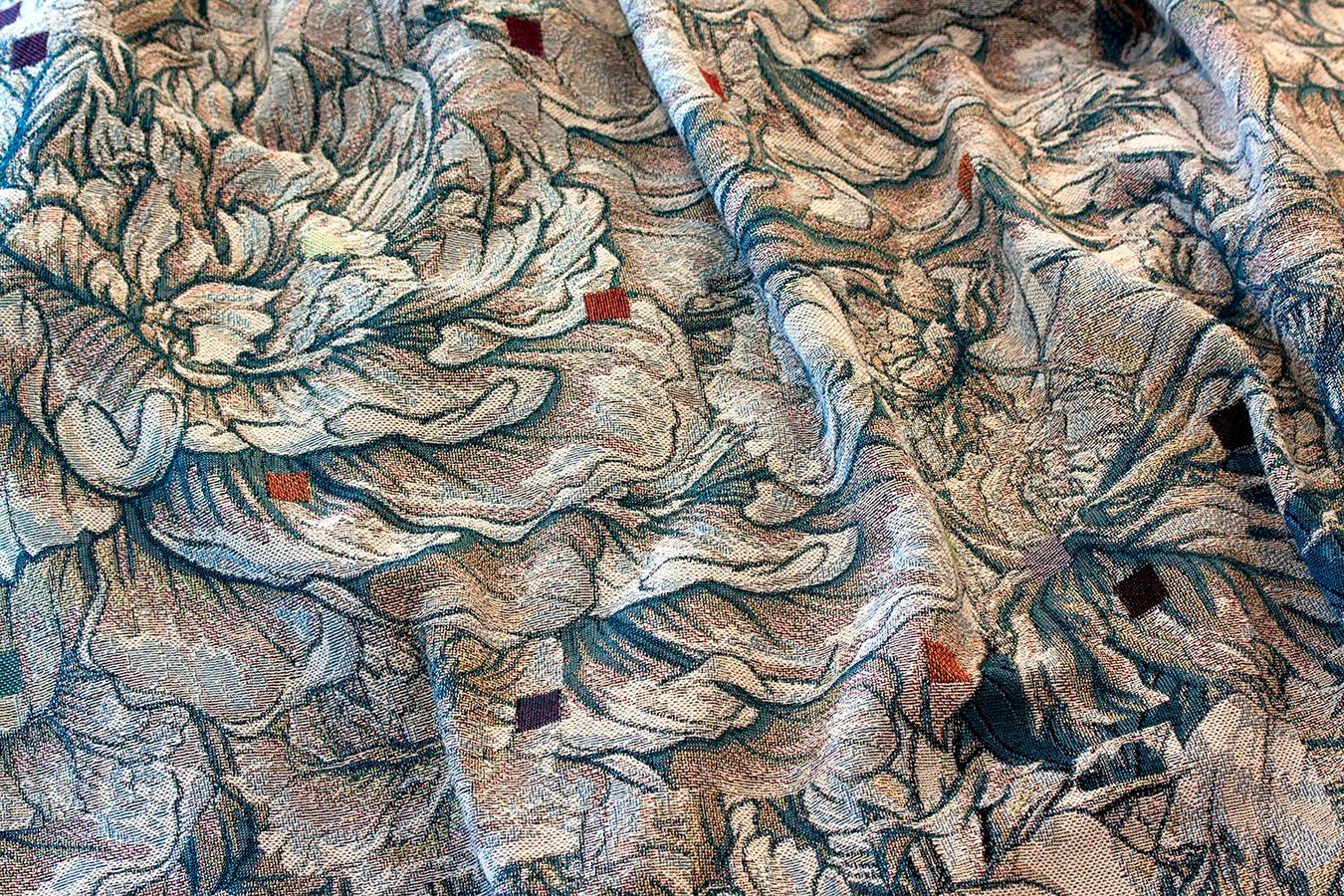
Each Lifeweave tapestry features woven color squares that correspond to specific characters in the computer code used to generate a dataset from an individual’s DNA.
Lifeweave
Next time you nestle under a throw for a cozy nap, you could be bundled in your DNA.
Lifeweave, a new company affiliated with the Broad Institute, a biomedical and genomic research center of Harvard and MIT, creates woven textiles featuring patterns that visually represent your unique genetic map, meaning no two are alike.
“Our tapestries are more than just fabric,” says the company, which is run by a team of artists and scientists. “They are intimate, personal narratives woven into threads, a celebration of your identity.”
To transform DNA into a tapestry, Lifeweave sends customers a saliva sample collection kit that they then return with a bit of spit that’s used to isolate specific DNA sequences. Proprietary software turns the customer’s hereditary material into a new dataset, a textile weave pattern, using an algorithmic process similar to encryption. Each tapestry includes a string of woven color squares that correspond with specific characters in the computer code and function like a unique identifier.
While these woven textiles don’t imitate natural forms and processes like traditional biomimetic fabrics, they do take inspiration from an intimate blueprint of life. The tapestries are more conceptual than literal — no helixes or biochemical formulas in sight. One style features blooming florals, the other displays geometric shapes. The tapestries look like something you’d find at a high-end store for home goods.
“It is a beautiful, colorful and soft throw that spreads light in the room,” customer Alessandra Troncone, an art historian and curator in Naples, Italy, said of her $1,500 bespoke product, which measures 82 inches by 62 inches and is made with sustainable yarn.
The textiles can serve as throws or wall hangings — and, of course, conversation starters. They’re 95% cotton, 75% of it recycled, and 5% polyester.
Lifeweave
This isn’t the first time DNA has been turned into art — companies like Genoma 23 already turn genetic data into personalized paintings, for example. Lifeweave’s founder, Italian artist Emilio Vavarella, a professor of media and film studies at Skidmore College in upstate New York, first came up with idea for DNA-driven textiles in 2019 while studying the history of the textile industry and computation as part of his doctoral research at Harvard.
“I learned that for several decades, data processing and weaving shared the same programming techniques,” Vavarella told me in an interview. “In fact, the first automated loom, the 19th century Jacquard loom, uses binary codes, in the form of punch cards, as instructions to weave patterns. Around the same time, I had also begun to think of DNA as a medium that is both hard to represent and, at the same time, incredibly special and personal.”
In 2020, with support from Italy’s Ministry of Culture, he turned his own genome into a large woven tapestry, which is now part of the collection at the Modern Art Museum in Bologna, Italy.
But Is Your Genetic Data Safe?
Lifeweave customers’ genetic material gets sequenced at a Massachusetts lab owned by the Broad Institute, where Vavarella was an artist in residence from April 2022 through January of this year. Lifeweave says the DNA extraction is completely anonymized, and data is sent encrypted to Terra.bio, a platform for biomedical research. The company stresses that it doesn’t sell or share health information with anyone in any form and that customers can request their raw genetic data or request that it be deleted.
Beyond the technical details lies something highly personal.
Customer Troncone learned of the genome woven artwork when Vavarella presented it at an art exhibition in Rome. She immediately ordered one, and uses it both as a blanket and a conversation piece.
“I love the idea of having something unique that ‘portrays’ myself, even if in a very abstract way,” Troncone said in an email. “Our DNA is our personal code: to see it translated in a geometric or floral design is very fascinating.”

